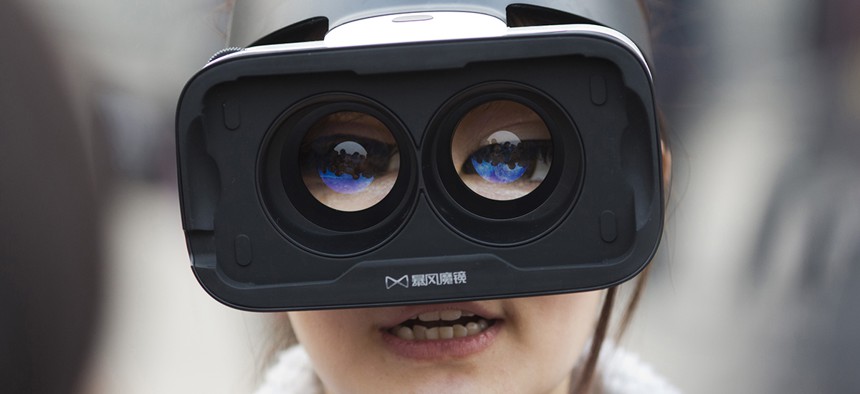Dystopian Virtual Reality Is Finally Here

A female journalist wears a virtual reality headgear as she poses for photographers in Beijing. Ng Han Guan/AP
And it's stranger than science fiction.
Today Oculus VR, the virtual-reality hardware company Facebook acquired for $2 billion in 2014, releases its flagship headset, the Oculus Rift. In so doing, it launches the era of commercial virtual reality, capping three decades of dreams, prototypes, false starts, and retreats into industrial specialization.
Rift isn’t alone: Later this year, Sony plans to ship its $399 PlayStation VR, a headset for use with its popular home console. And the Vive, a collaboration between the Taiwanese hardware manufacturer HTC and the American software company Valve, is also expected to appear in 2016.
Cheaper options are available, too, including Gear VR, Oculus’s $100 Samsung Galaxy smartphone VR attachment. And then there’s Google Cardboard, a cheap, paper VR housing for a smartphone that you can buy for $15.
After decades of experiments and false starts, it would appear that commercial VR is finally here.
But a question remains: What is commercial virtual reality, anyway, and how does it relate to the decades-old science fictional dreams of VR? The answer is that it doesn't, but that's no comfort. We might be in for a far stranger future than our previous dystopic nightmares ever imagined.


